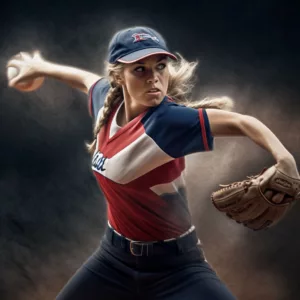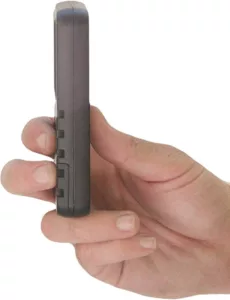 Have you ever unwinded in front of the television to witness a thrilling game of college softball or Team USA? If so, you've probably heard the commentators say things like, "A 60 mph fastball in Fast Pitch Softball is equivalent to a 95 mph fastball in baseball." Such comparisons may have made you question about the formula underlying these statements and their veracity.
Have you ever unwinded in front of the television to witness a thrilling game of college softball or Team USA? If so, you've probably heard the commentators say things like, "A 60 mph fastball in Fast Pitch Softball is equivalent to a 95 mph fastball in baseball." Such comparisons may have made you question about the formula underlying these statements and their veracity.
Let us go into this fascinating subject. These similarities have a certain ambiguity about them, which sometimes leaves viewers bewildered. After all, how do the announcers come to these conclusions? And, when put to the test, do these claims hold up? It's past time to reveal this unique facet of the lovely games of softball and baseball.
| Softball Pitch Velocity (mph) | Reaction Time (s) | Baseball Pitch Velocity (mph) |
|---|---|---|
| 50 | 0.505 | 72.3 |
| 51 | 0.495 | 73.7 |
| 52 | 0.485 | 75.2 |
| 53 | 0.476 | 76.6 |
| 54 | 0.467 | 78.1 |
| 55 | 0.459 | 79.5 |
| 56 | 0.450 | 81 |
| 57 | 0.443 | 82.4 |
| 58 | 0.435 | 83.9 |
| 59 | 0.428 | 85.3 |
| 60 | 0.420 | 86.8 |
| 61 | 0.414 | 88.2 |
| 62 | 0.407 | 89.6 |
| 63 | 0.400 | 91.1 |
| 64 | 0.394 | 92.5 |
| 65 | 0.388 | 94 |
| 66 | 0.382 | 95.4 |
| 67 | 0.377 | 96.9 |
| 68 | 0.371 | 98.3 |
| 69 | 0.366 | 99.8 |
| 70 | 0.360 | 101.2 |
Pitching in Softball and Baseball: The Fundamentals
Understanding the batter's response time is critical to understanding the comparison between softball pitching and baseball pitching. The pitching distance in softball is 43 feet internationally, at the college level, and shortly to be the standard in high school. Consider a batter facing a 60 mph fastball. The batter has around 0.42 seconds to respond to the pitch. Surprised? Distance = Speed x Time is merely basic physics.
To go a little more technical, the average softball pitcher launches the ball roughly 6 feet from the rubber (but stars like Jenny Finch have a 7-foot stride!). As a result, the actual pitching distance is 37 feet. And, lo and behold a 60 mph fastball takes exactly 0.42 seconds to traverse this distance.
Pitch Speed in Baseball: 60 mph Softball Pitch vs 95mph
 To make a straight comparison, we must know the speed at which a baseball should be tossed in order to achieve the same pitching distance in 0.42 seconds. According to Google, the typical baseball pitcher's stride is between 80% and 90% of their height. So, a 6'2" pitcher's stride distance is around 5.25 feet (assuming 85% of his height). The main distinction is in the delivery: a baseball pitcher extends his pitching arm past his body, implying a total release point of 7 feet from the rubber.
To make a straight comparison, we must know the speed at which a baseball should be tossed in order to achieve the same pitching distance in 0.42 seconds. According to Google, the typical baseball pitcher's stride is between 80% and 90% of their height. So, a 6'2" pitcher's stride distance is around 5.25 feet (assuming 85% of his height). The main distinction is in the delivery: a baseball pitcher extends his pitching arm past his body, implying a total release point of 7 feet from the rubber.
As a result, the baseball pitching distance is 53.5 feet. So, how quickly does the ball have to travel to cover this distance in 0.42 seconds? You guessed correctly! It's 86.8 miles per hour.
A Practical Guide to 60 mph Softball Pitch
Consider the following chart, which provides equivalent baseball pitching speeds for matching softball pitching speeds based on the aforementioned computations.
Behind the Radar Guns: Speed Measurement
 A quick aside: the speeds we see on TV are measured with radar guns, which monitor the speed of the ball as it leaves the pitcher's hand. We recommend the Pocket Radar. This article, on the other hand, discusses the average speed of the batter. We use a speed of 60 mph since we know the pitch starts fast but slows down by the time it reaches the batter.
A quick aside: the speeds we see on TV are measured with radar guns, which monitor the speed of the ball as it leaves the pitcher's hand. We recommend the Pocket Radar. This article, on the other hand, discusses the average speed of the batter. We use a speed of 60 mph since we know the pitch starts fast but slows down by the time it reaches the batter.
Given the varying accuracy of different radar devices, I believe the 'average' approach to speed equivalence has more value than examining the highest speed out of the pitcher's hand.
Another Tool for Determining Speed is Video Analysis
I usually figure out a pitcher's speed by watching video footage. I can compute the average pitch speed by counting the video frames till the ball reaches the batter by measuring the actual distance from the rubber to the release point (if I have a side view of the pitcher). The disadvantage of this strategy is that it lacks real-time functionality, albeit it can produce results in a matter of minutes if properly configured. You can use the Pitching Velocity Calculator to perform this math.
How to Develop the 60 mph Softball Pitch
 We live in a time when the convergence of technology and sports science has created unparalleled opportunities to improve athletic performance. The combination of the 3X Fastpitch Velocity Program with the Queen of the Hill training regimen is one such innovative technique that is making waves in the softball world. They constitute a powerful alliance that enables pitchers to improve their game by improving pitching velocity.
We live in a time when the convergence of technology and sports science has created unparalleled opportunities to improve athletic performance. The combination of the 3X Fastpitch Velocity Program with the Queen of the Hill training regimen is one such innovative technique that is making waves in the softball world. They constitute a powerful alliance that enables pitchers to improve their game by improving pitching velocity.
The 3X Fastpitch Velocity Program, as the name implies, is intended to help fastpitch softball players improve their pitching speed. To build strength, power, and velocity, the program blends cutting-edge scientific training methodologies with a holistic grasp of biomechanics. The 3X method focuses on utilizing the force of the lower body, resulting in a kinetic chain that propels the softball at a considerably faster rate. As a result, players can achieve higher speeds while reducing their risk of damage.
The Queen of the Hill, on the other hand, is an excellent training tool that teaches players how to effectively utilize the power created by their legs and hips. This device teaches proper throwing mechanics and provides real-time feedback by increasing ground force creation. The Queen of the Hill device "rewards" a player with a characteristic "click" sound when they correctly complete the kinetic chain from their lower body. This immediate aural feedback reinforces proper movement patterns, supporting pitchers in ingraining these optimal mechanics into muscle memory.
When these two powerful mechanisms work together, the outcome is an extremely effective technique for increasing pitching velocity. The scientific methodology of the 3X Fastpitch Velocity Program perfectly complements the kinesthetic input of the Queen of the Hill, providing players with a comprehensive, dynamic, and participatory training experience. So, are you ready to up the tempo on your pitches? Try this combo and watch your performance soar.


